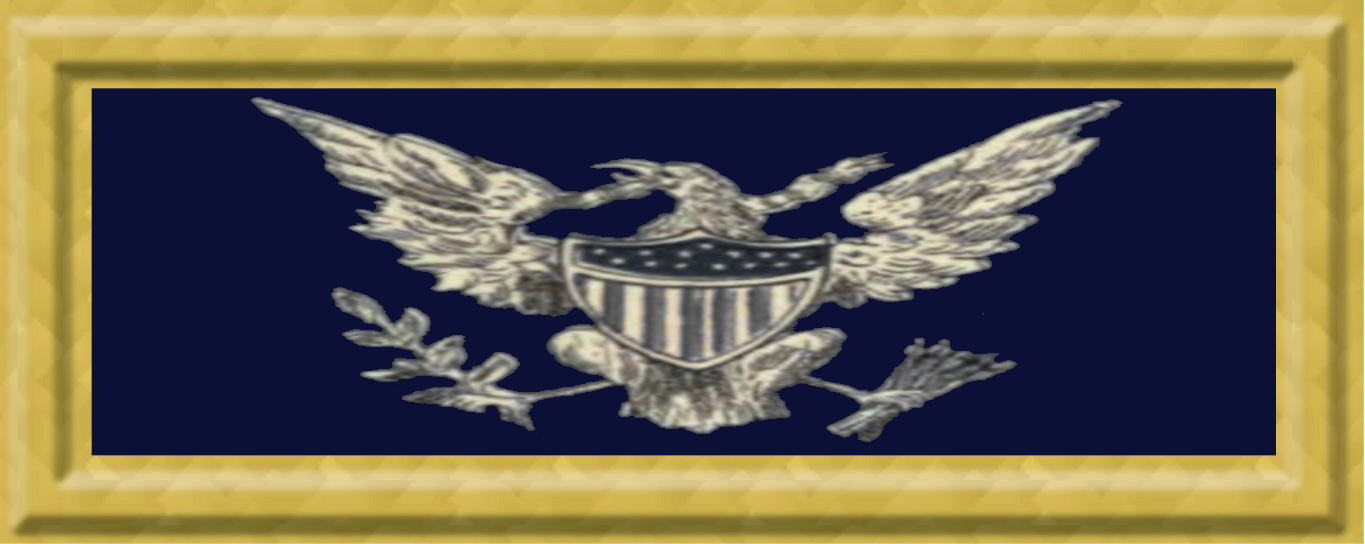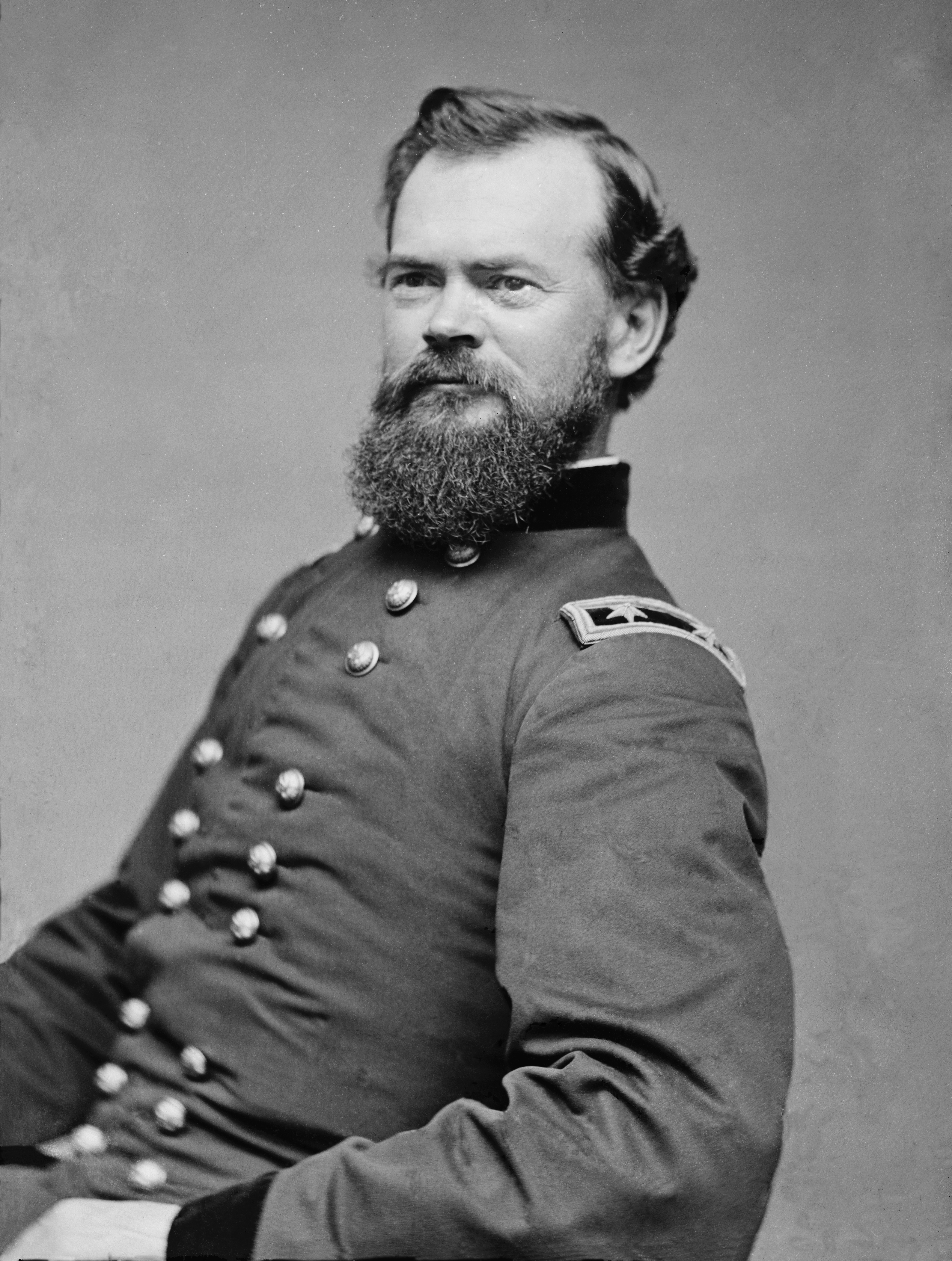|
Henry B. Banning
Henry Blackstone Banning (November 10, 1836 – December 10, 1881) was a lawyer and three-term U.S. Representative from Ohio, as well as an infantry officer in the Union Army during the American Civil War. Early life and career Born in Bannings Mills, Ohio, Banning attended the Clinton district school, Mount Vernon Academy, and Kenyon College, Gambier, Ohio, where he stayed a short time before returning to Mount Vernon to study law in the office of ''Hosmer, Curtis & Devin''. Reid 1895 : 829 He was admitted to the bar in 1857 and commenced practice in Mount Vernon, Ohio. Civil War service With the outbreak of the Civil War, he enlisted in April 1861 in the Union Army as a private. He was commissioned as a captain in Company B of the 4th Ohio Infantry, on June 5, 1861. He served as colonel of the 87th Ohio Infantry (a three-month regiment), June 10-September 20, 1862. Banning was honorably mustered out October 4, 1862. He reenlisted and was commissioned lieutenant colon ... [...More Info...] [...Related Items...] OR: [Wikipedia] [Google] [Baidu] |
Ohio's 2nd Congressional District
Ohio's 2nd congressional district is a district in southern Ohio. It is currently represented by Republican David Taylor. The district includes all of Adams, Brown, Pike, Clermont, Highland, Clinton, Ross, Pickaway, Hocking, Vinton, Jackson, Gallia, Meigs, Lawrence, and Scioto counties, as well as parts of Fayette county. With a Cook Partisan Voting Index rating of R+24, it is the most Republican district in Ohio and the Northern United States overall. Composition For the 118th and successive Congresses (based on redistricting following the 2020 census), the district contains all or portions of the following counties, townships, and municipalities: Adams County (21) : All 21 townships and municipalities Brown County (25) : All 25 townships and municipalities Clermont County (25) : All 25 townships and municipalities Clinton County (22) : All 22 townships and municipalities Fayette County (2) : Green Township, Perry Township Gallia Count ... [...More Info...] [...Related Items...] OR: [Wikipedia] [Google] [Baidu] |
Brevet (military)
In military terminology, a brevet ( or ) is a warrant which gives commissioned officers a higher military rank as a reward without necessarily conferring the authority and privileges granted by that rank. The promotion would be noted in the officer's title (for example, "Bvt. Maj. Gen. Joshua L. Chamberlain" or "Bvt. Col. Arthur MacArthur"). It is not to be confused with a '' Brevet d'état-major'' in Francophone European military circles, where it is an award, nor should it be confused with temporary commissions. France In France, ''brevet'' is a word with a very broad meaning, which includes every document giving a capacity to a person. For instance, the various military speciality courses, such as military parachutism, are ended by the award of a brevet. The more important brevet in the French military is that of the École de guerre (''lit''. "school of war"), the French Staff College. Between 1870 and 1940, an ''officier breveté'' was a graduate of the ''École ... [...More Info...] [...Related Items...] OR: [Wikipedia] [Google] [Baidu] |
Battle Of Resaca
The Battle of Resaca, from May 13 to 15, 1864, formed part of the Atlanta Campaign during the American Civil War, when a Union force under William Tecumseh Sherman engaged the Confederate Army of Tennessee led by Joseph E. Johnston. The battle was fought in Gordon and Whitfield Counties, Georgia, and is generally viewed as inconclusive. The campaign began with Johnston holding strong defensive positions at Buzzard's Roost Gap and Rocky Face Ridge, which he hoped Sherman would assault. He was compelled to abandon Dalton when the Union Army of the Tennessee under James B. McPherson seized the unguarded Snake Creek Gap on May 8, threatening Resaca from the west. Johnston retreated to Resaca where he was joined by reinforcements gathering there; he was pursued by Sherman, most of whose forces followed McPherson through Snake Creek Gap, while others came south down the Western and Atlantic Railroad. On May 14, Sherman gained a foothold west of Resaca but an attack on Confedera ... [...More Info...] [...Related Items...] OR: [Wikipedia] [Google] [Baidu] |
Battle Of Rocky Face Ridge
The Battle of Rocky Face Ridge was fought May 7–13, 1864, in Whitfield County, Georgia, during the Atlanta Campaign of the American Civil War. The Union army was led by Maj. Gen. William Tecumseh Sherman and the Confederate army by Gen. Joseph E. Johnston. Confederates were forced to evacuate their strong position due to a Union flanking movement. Battle General Johnston had entrenched his army on the long, steep Rocky Face Ridge and eastward across Crow Valley. When Sherman approached, he demonstrated against this position with two columns while he sent a third one through Snake Creek Gap, to the south, to hit the Western & Atlantic Railroad at Resaca. The first two columns engaged the enemy at Buzzard Roost (Mill Creek Gap) and at Dug Gap while the third column, under Maj. Gen. James B. McPherson, passed through Snake Creek Gap and on May 9 advanced to the outskirts of Resaca, where it found Confederates entrenched. Fearing the strength of the enemy, McPherson pull ... [...More Info...] [...Related Items...] OR: [Wikipedia] [Google] [Baidu] |
Battle Of Chickamauga
The Battle of Chickamauga, fought on September 18–20, 1863, between the United States Army and Confederate States Army, Confederate forces in the American Civil War, marked the end of a U.S. Army offensive, the Chickamauga Campaign, in southeastern Tennessee and northwestern Georgia (U.S. state), Georgia. It was the first major battle of the war fought in Georgia and the most significant US defeat in the Western Theater of the American Civil War, Western Theater, and it involved the second-highest number of casualties after the Battle of Gettysburg. The battle was fought between the U.S. Army's Army of the Cumberland under major general (United States), Maj. Gen. William Rosecrans and the Confederate States Army, Confederate Army of Tennessee under General (CSA), Gen. Braxton Bragg, and was named for Chickamauga Creek. The West Chickamauga Creek meanders near and forms the southeast boundary of the battle area and the park in northwest Georgia. (The South Chickamauga ultimatel ... [...More Info...] [...Related Items...] OR: [Wikipedia] [Google] [Baidu] |
Battle Of Cross Keys
The Battle of Cross Keys was fought on June 8, 1862, in Rockingham County, Virginia, as part of Confederate Army Maj. Gen. Thomas J. "Stonewall" Jackson's campaign through the Shenandoah Valley during the American Civil War. Together, the battles of Cross Keys and Port Republic the following day were the decisive victories in Jackson's Valley Campaign, forcing the Union armies to retreat and leaving Jackson free to reinforce Gen. Robert E. Lee for the Seven Days Battles outside Richmond, Virginia. Background The hamlet of Port Republic, Virginia, lies on a neck of land between the North and South Rivers, which conjoin to form the South Fork Shenandoah River. On June 6–7, 1862, Jackson's army, numbering about 16,000, bivouacked north of Port Republic, Maj. Gen. Richard S. Ewell's division along the banks of Mill Creek near Goods Mill, and Brig. Gen. Charles S. Winder's division on the north bank of North River near the bridge. The 15th Alabama Infantry regiment was lef ... [...More Info...] [...Related Items...] OR: [Wikipedia] [Google] [Baidu] |
First Battle Of Winchester
The First Battle of Winchester, fought on May 25, 1862, in and around Frederick County, Virginia, and Winchester, Virginia, was a major victory in Confederate Army Maj. Gen. Thomas J. "Stonewall" Jackson's Campaign through the Shenandoah Valley during the American Civil War. Jackson enveloped the right flank of the Union Army under Maj. Gen. Nathaniel P. Banks and pursued it as it fled across the Potomac River into Maryland. Jackson's success in achieving force concentration early in the fighting allowed him to secure a more decisive victory which had escaped him in previous battles of the campaign. Background Maj. Gen. Nathaniel P. Banks learned on May 24, 1862, that the Confederates had captured his garrison at Front Royal, Virginia, and were closing on Winchester, turning his position. He ordered a hasty retreat down the Valley Pike from Strasburg. His columns were attacked at Middletown and again at Newtown ( Stephens City) by Jackson's converging forces. The Conf ... [...More Info...] [...Related Items...] OR: [Wikipedia] [Google] [Baidu] |
Romney, West Virginia, In The American Civil War
The town of Romney, Virginia (now West Virginia), traded hands between the Union Army and Confederate States Army no fewer than 10 times during the American Civil War, assuming the occupying force spent at least one night in the town. (Oral tradition and an erroneous state historical marker claim the town changed hands 56 times.) The story of the small town is emblematic of the many military campaigns that swept through western Virginia and, later, the new state of West Virginia. 1861 *Union Col. Lewis "Lew" Wallace, in command of the 11th Indiana Zouaves, occupied Romney for a few hours on June 13. *The next day, Col. Ambrose P. Hill's Confederates occupied the town. *Confederate Col. John C. Vaughn of the 3rd Tennessee was apparently stationed in Romney, from which, under orders of A.P. Hill of the 13th Virginia Infantry, he attacked Federal forces at New Creek on June 18. *Confederate Capt. Turner Ashby established the headquarters of the 7th Virginia Cavalry at "Camp Was ... [...More Info...] [...Related Items...] OR: [Wikipedia] [Google] [Baidu] |
Battle Of Rich Mountain
The Battle of Rich Mountain took place on July 11, 1861, in Randolph County, Virginia (now West Virginia) as part of the Operations in Western Virginia Campaign during the American Civil War. Background Maj. Gen. George B. McClellan assumed command of Union forces in western Virginia in June 1861. On June 27, he moved his divisions from Clarksburg south against Lt. Col. John Pegram's Confederates, reaching the vicinity of Rich Mountain on July 9. Meanwhile, Brig. Gen. Thomas A. Morris's Union brigade marched from Philippi to confront Brig. Gen. Robert S. Garnett's command at Laurel Hill. On July 10–11, Brig. Gen. William Rosecrans led a reinforced brigade by a mountain path to seize the Staunton-Parkersburg Turnpike in Pegram's rear. Opposing forces Union Confederate Battle Laurel Mountain Union forces under Thomas A. Morris, totaling approximately 4000 troops, beset Confederates under General Garnett at Laurel Mountain starting July 7. After less than a we ... [...More Info...] [...Related Items...] OR: [Wikipedia] [Google] [Baidu] |
American Civil War
The American Civil War (April 12, 1861May 26, 1865; also known by Names of the American Civil War, other names) was a civil war in the United States between the Union (American Civil War), Union ("the North") and the Confederate States of America, Confederacy ("the South"), which was formed in 1861 by U.S. state, states that had Secession in the United States, seceded from the Union. The Origins of the American Civil War, central conflict leading to war was a dispute over whether Slavery in the United States, slavery should be permitted to expand into the western territories, leading to more slave states, or be prohibited from doing so, which many believed would place slavery on a course of ultimate extinction. Timeline of events leading to the American Civil War, Decades of controversy over slavery came to a head when Abraham Lincoln, who opposed slavery's expansion, won the 1860 presidential election. Seven Southern slave states responded to Lincoln's victory by seceding f ... [...More Info...] [...Related Items...] OR: [Wikipedia] [Google] [Baidu] |






